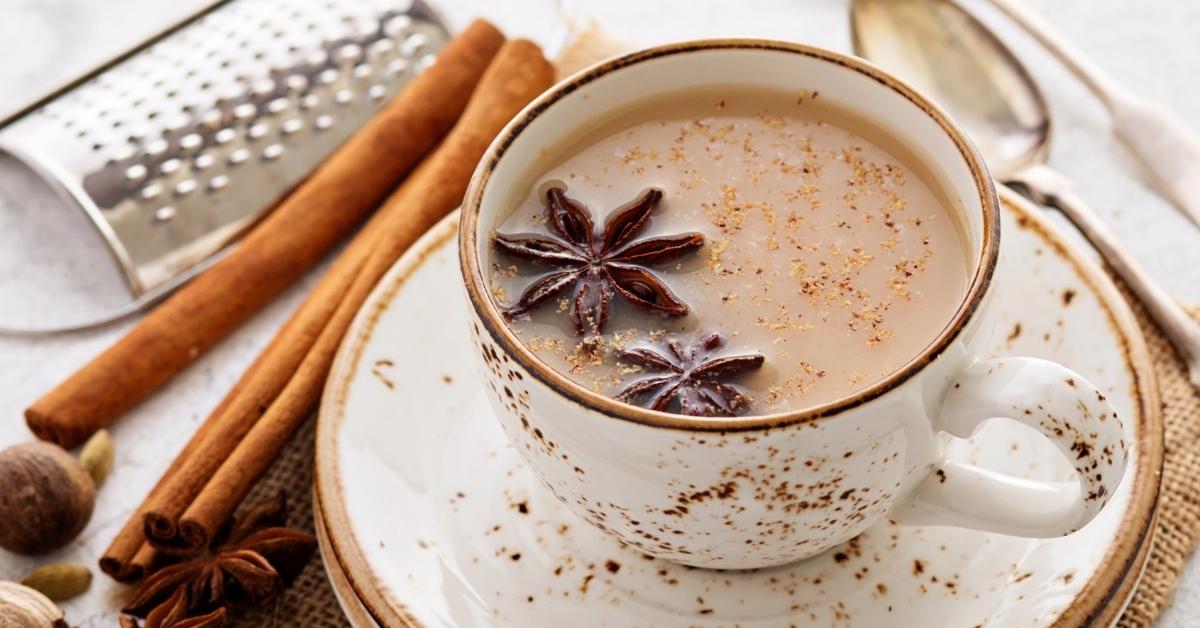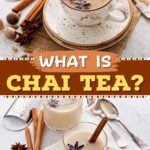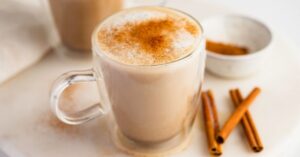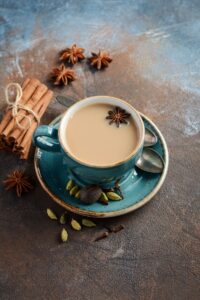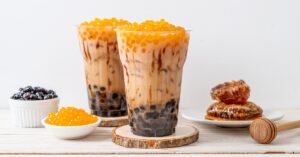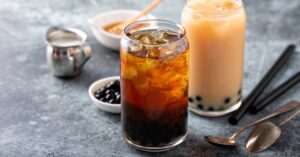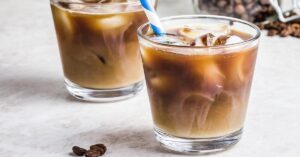You see it on the menu of coffee shops around the world. But have you ever wondered, what is chai tea actually? And why is it so darn good?
What are its origins? What does it taste like? How is it made?
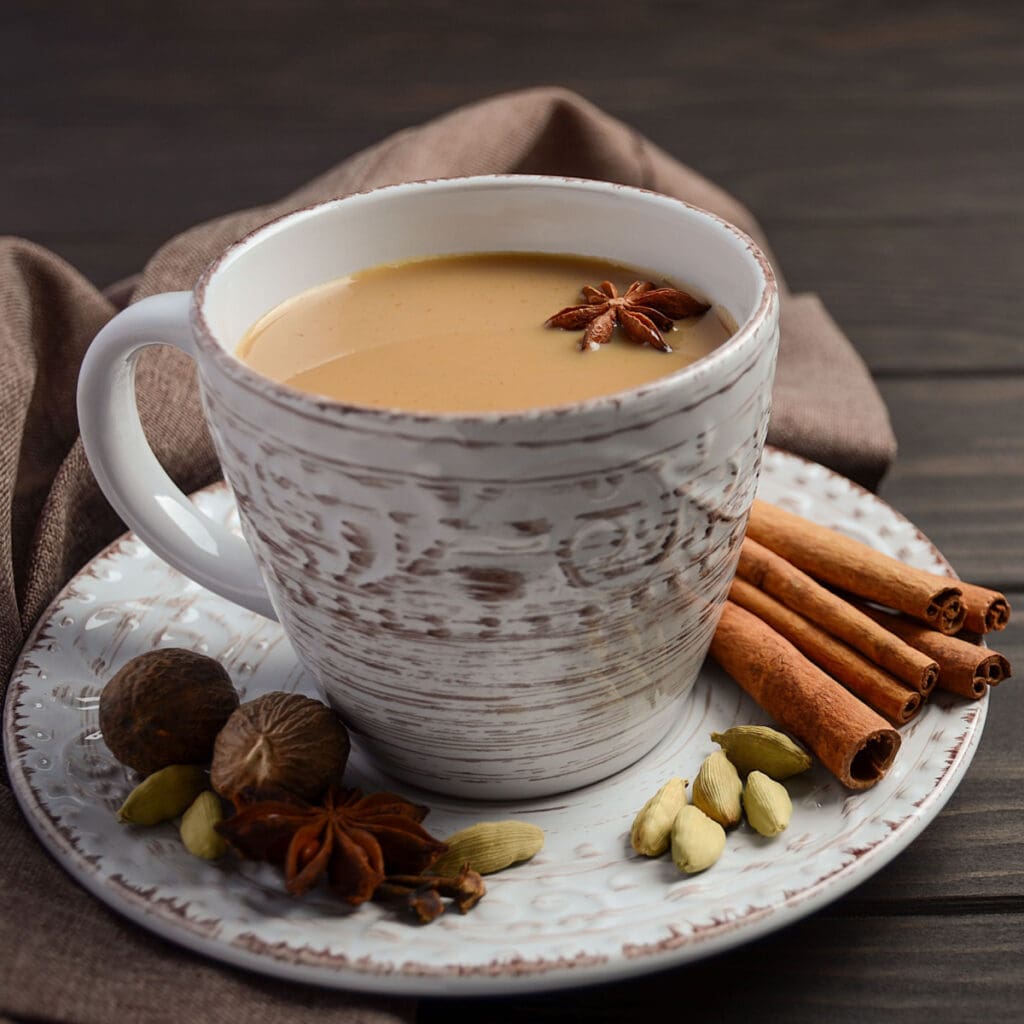
Why is some chai better than others?
Why does some chai taste totally different from other chai? Well, don’t worry because I have all the tea on chai!
And I’m here to answer all your burning questions. Let’s just say I’m steeped in chai knowledge. Now, I can share it with you.
Let’s get into it!
What is Chai Tea?
First things first, t’s just chai. Saying “chai tea” is redundant.
Because chai literally means tea in India, where this particular drink originated.
Now, what we in the West call “chai” typically refers to one specific tea.
It’s a fragrant, freshly spiced black tea called masala chai. Masala means spice or spices in Hindi.
(For the purposes of this article, chai will always refer to masala chai.)
Traditionally, chai features black tea and fresh spices, steeped together in hot milk and water.
The spices and tea bags are strained out later, leaving chai behind.
This is different from the way most people make tea globally. Take the UK for example. They’re very serious tea people.
There, black tea is steeped in water and milk is added afterward.
That is pretty standard for most types of tea. Or you just leave the milk out entirely.
But for proper chai, the milk does the work.
This results in a steamy, creamy cup of tea nirvana. It’s also often sweetened with sugar or honey, to taste.
But that’s just the tip of the iceberg. For many, chai is more than just tea.
It’s nostalgic and comforting, it’s sometimes medicinal, and it’s deeply cultural.
You can find chai in cafés, restaurants, and coffee shops around the world.
I guarantee your grocery store carries multiple varieties, too. So, you can make chai at home.
It’s the perfect way to start your day or pick up your afternoon.
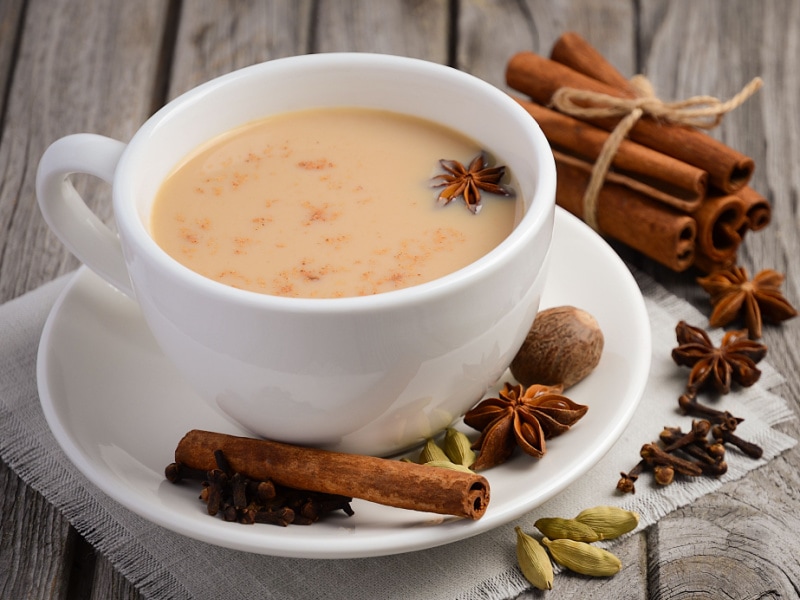
Origins of Chai
Chai dates back over 5,000 years ago. It originated in the Assam region of India.
But it didn’t contain black tea or milk back then.
Rather, it was just spices and water. And it was commonly used in Ayurvedic medicine.
The combo of spices has some pretty great health benefits.
It has anti-inflammatory properties and tons of antioxidants. Also, chai spices can relieve pain, treat nausea, and aid in digestion.
It can even help reduce the risk of heart disease.
All in all, it’s definitely worth drinking daily.
However, chai as we know it came about because of politics.
In the 1900s Britain colonized India. At that time, China was the largest exporter of tea to Europe.
But at some point, China restricted tea exports.
The English were already hooked, though. So, they began new tea plantations in Assam, India, where it was growing naturally.
But the Brits didn’t really know what they were doing.
They had a lot of not-so-great tea and had difficulties exporting it.
To save their profits, they began encouraging the Indian people to drink tea.
But, the tea didn’t taste great because the quality was low.
Not even the traditional British additions of milk and sugar could help much.
So, the Indian Chaiwallahs added their own spice blends. And thus, chai was born.
And it became so popular it became the tea of India.
And now, chai is known and loved around the world.
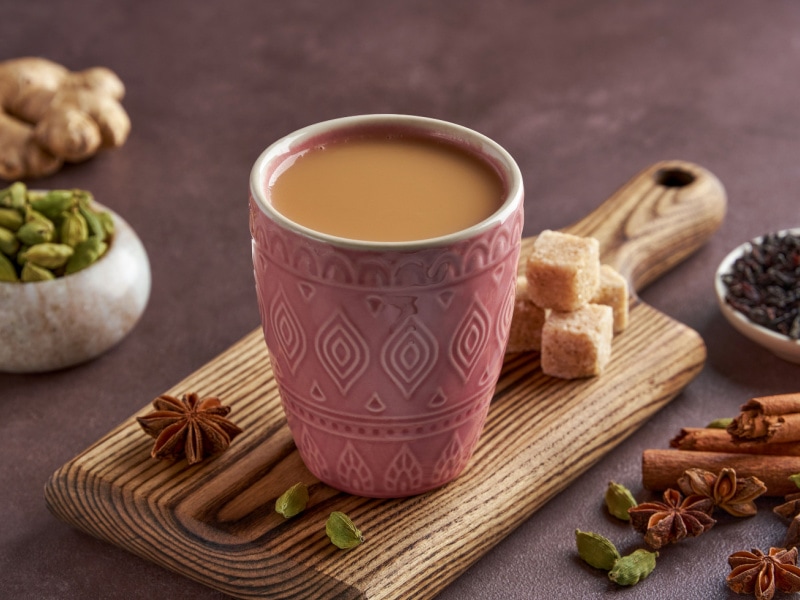
Components of Chai
Tea
You want to use strong black tea. The first chai recipe was made with Assam tea, which is dark and malty.
But other regions of India use Darjeeling, which is more floral.
But you can use whatever kind of black tea you like. Ceylon, English breakfast, Rooibos, and Lipton brand black tea are fantastic options.
Ideally, you want to use loose-leaf tea as it has more flavor. But you can use whatever you have on hand.
You can even use premade chai bags or concentrate.
Milk
Traditional Indian chai was often made with buffalo milk. But these days, most chai is made with regular cow milk.
Or one of the many plant-based milk choices out there.
Personally, I’m a fan of oat milk. But coconut, almond, cashew, and soy milk are also great.
Spices
The most commonly used spices are cardamom, ginger, cinnamon, star anise, clove, and black peppercorns.
Ideally, you want to use whole spices. At least, that’s traditional.
These spices create a tongue-tantalizing mix of heat and sweetness.
But there are myriads of variations. Even in India, chai changes by region and family preference.
Some recipes may include all of these spices or only one. And each recipe contains varying levels of each spice.
That’s why some chai tastes so different from others.
And it also explains why some cups of chai are wonderfully delicious.
Others taste like milk water, with a hint of cinnamon.
Sweetener
Plain white sugar is the most common sweetener used in chai globally.In India, it’s common to use jaggery sugar. But you can use any sweetener you like.
I’m a fan of honey or brown sugar. But whatever sugars or sweeteners you have on hand will work just fine.

Chai vs. Chai Latte (What’s the Difference?)
To put it simply, the difference comes down to milk and sugar.
As you know, chai is spiced black tea, steeped in hot milk.It’s simple and delicious. But it’s basically a normal cup of tea.
A chai latte, on the other hand, has a heck of a lot more milk!
And that milk is steamed and frothed, just like a coffee latte. It’s rich, foamy, and delicious.
Also, most chai lattes are made with chai powder, flavor syrup, or concentrate.
And those contain a lot more sugar than regular chai, plus, they most likely don’t have fresh spices.
If you can, choose a chai concentrate over the powder or syrup. It’s the most flavorful and the most like regular chai.
PRO TIP: If you can’t decide between coffee and chai, do both!
This is called dirty chai, a chai latte, with a shot (or two) of espresso.
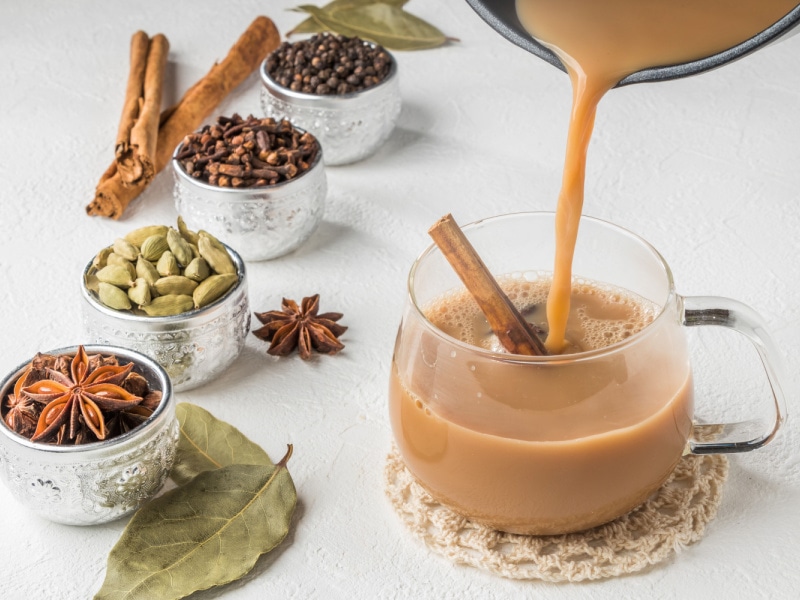
How to Make Chai
There’s a fair bit of debate on the best ways to make classic chai. And each method depends on what you have available.
Here are three good ways to do it.
- Add your milk, water, sugar, tea, and spices to a pot. Bring it to a boil. Then, reduce the heat and simmer until your desired strength of flavor.
- Simmer the water and milk first. Then add in your tea, spices, and sugar.
- Bring water to a boil. Add your tea and spices, and let it simmer. Then, add milk.
If you only have premade tea bags, no worries. You can use any of the above methods, just with the chai bags.
Though, you could totally add more spices if you like.
If you only have concentrate, heat up your milk first.
Then, add in concentrate per package directions. The same goes for chai powder.
Tips for Making Chai
- Use fresh tea and spices for the boldest flavor.
- Simmer everything longer for a stronger flavor.
- Use a wooden spoon to really press down on the tea and spices. You want to get all that good flavor!
- Traditionally, chai is aerated. Pour strained chai back and forth between the pot and the cup until it’s foamy.
- This is called pulling, and it creates a lovely smooth flavor.
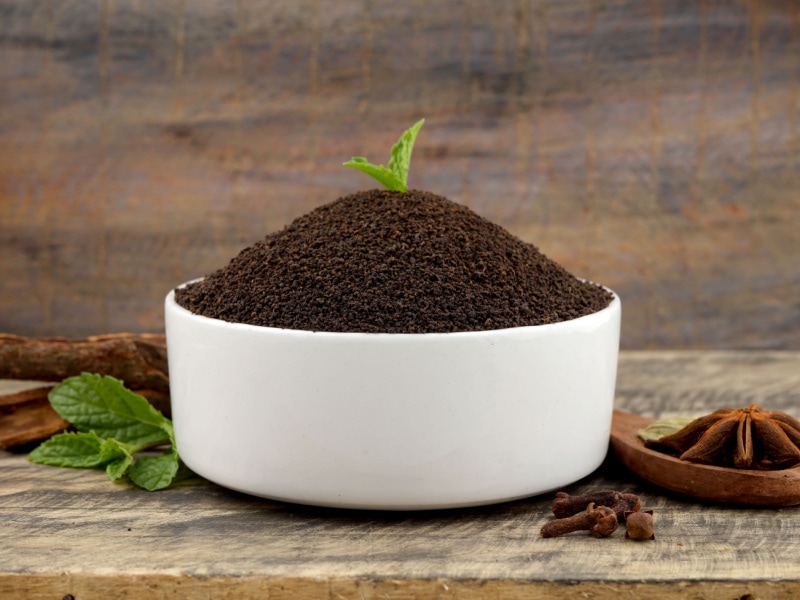
Buying and Storing Chai
You can get decent chai blends at pretty much any grocery store out there. Tazo, Twinning, and Good Earth are all solid brands.
But the best chai will be found in Indian/Asian grocery shops. You can go online, too.
Just be sure the company is reputable, with info on their processing and packaging procedures.
But for all tea, the same storage rules apply.
- Store the tea in a cool, dark place.
- Keep the tea away from heat, light, oxygen, and moisture. It keeps the best in an air-tight, opaque container.
- Never store tea leaves or bags in the refrigerator. Chai concentrate can be refrigerated.
- Don’t store tea with strong spices or coffee. They can change the flavor of the tea.
Follow these instructions and your chai should last for a year.


